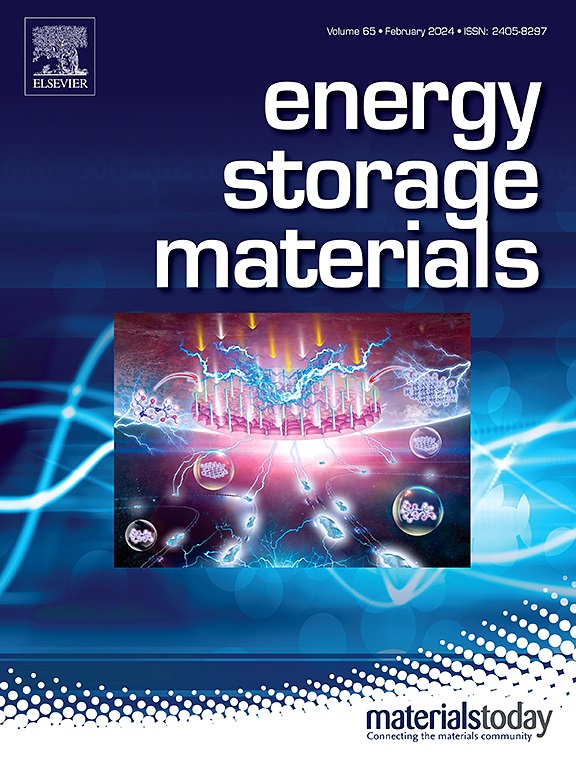Enhanced Corrosion Stability and Cycling Performance of Dual-Salts Polymer Electrolytes for Li-metal Polymer Batteries
IF 18.9
1区 材料科学
Q1 CHEMISTRY, PHYSICAL
引用次数: 0
Abstract
Mitigating lithium (Li) corrosion during both storage and cycling is crucial for the performance of lithium-metal polymer batteries (LMPBs), as these systems undergo repeated storage and operation. Despite this, research has predominantly focused on enhancing cycling, often neglecting storage stability. Here, we demonstrate that a polymer electrolyte containing LiTFSI/LiBF4 and FEC (D-LiBF4 FEC) significantly improves both corrosion resistance and cycling stability. The D-LiBF4 FEC electrolyte forms a dense, LiF-rich solid-electrolyte interphase (SEI) during storage, effectively reducing polymer decomposition and enhancing long-term performance in repeated cycling-storage conditions. In contrast, conventional LiTFSI/LiBOB and LiTFSI/LiDFOB systems fail to maintain prolonged cycling life after storage, as their organic-rich SEIs exacerbate Li corrosion. Our multi-faceted analysis—including depth-profiling X-ray photoelectron spectroscopy, electron micrography, and electrochemical studies—highlights the critical role of a high LiF-to-organic ratio in the SEI. We further propose a representative cycling-storage protocol, under which our LMPBs demonstrated over 1,500 hours of operation at 0.3 mA cm−2 and achieved an extended lifespan of 10,000 hours for continuous cycling at 0.1 mA cm−2 at room temperature. These findings underscore the importance of addressing Li corrosion during storage periods and provide key strategies for designing polymer electrolytes to improve Li-metal electrode performance.求助全文
约1分钟内获得全文
求助全文
来源期刊

Energy Storage Materials
Materials Science-General Materials Science
CiteScore
33.00
自引率
5.90%
发文量
652
审稿时长
27 days
期刊介绍:
Energy Storage Materials is a global interdisciplinary journal dedicated to sharing scientific and technological advancements in materials and devices for advanced energy storage and related energy conversion, such as in metal-O2 batteries. The journal features comprehensive research articles, including full papers and short communications, as well as authoritative feature articles and reviews by leading experts in the field.
Energy Storage Materials covers a wide range of topics, including the synthesis, fabrication, structure, properties, performance, and technological applications of energy storage materials. Additionally, the journal explores strategies, policies, and developments in the field of energy storage materials and devices for sustainable energy.
Published papers are selected based on their scientific and technological significance, their ability to provide valuable new knowledge, and their relevance to the international research community.
 求助内容:
求助内容: 应助结果提醒方式:
应助结果提醒方式:


